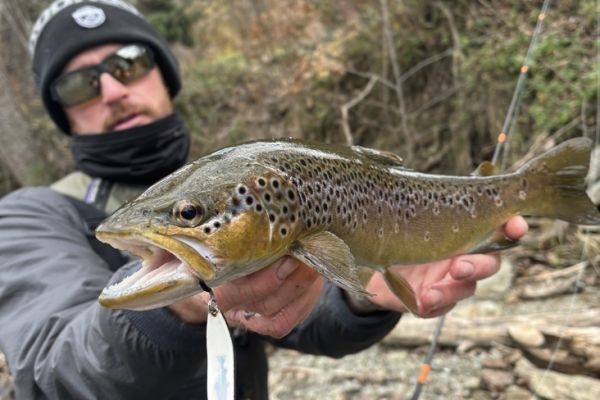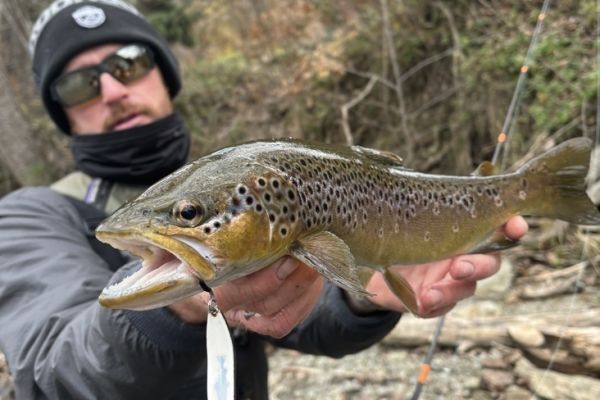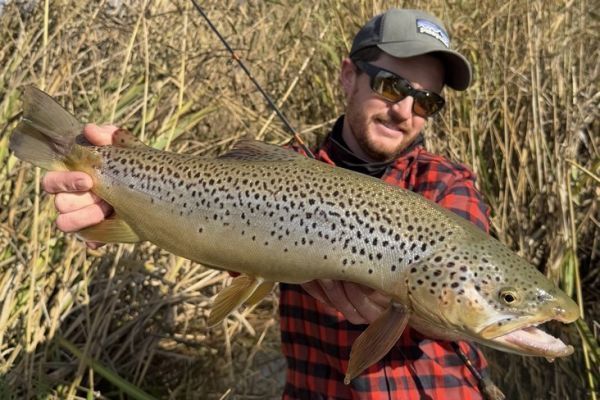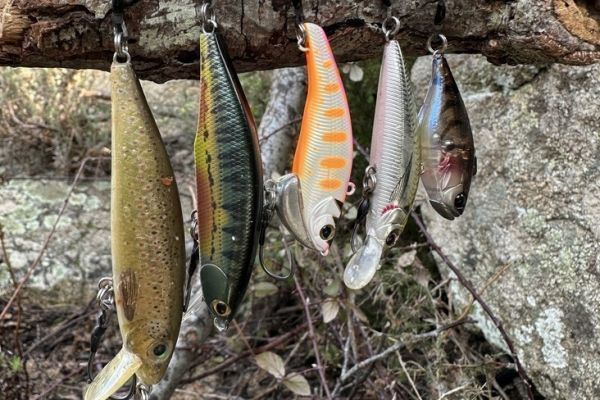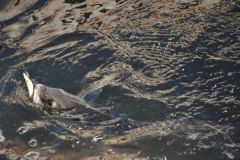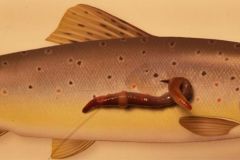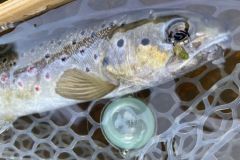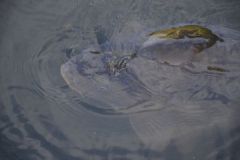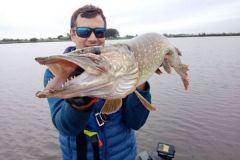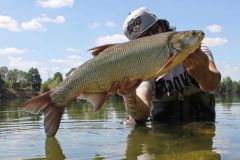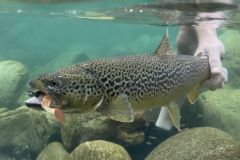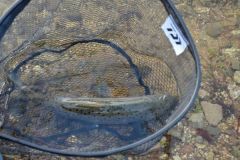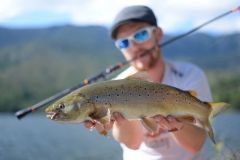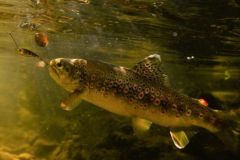With its enchanting swimming action and ever-present flashes of light, the wobbling spoon is one of the most versatile lures for trout fishing.
The wobbling spoon in detail
Unlike the spinning spoon, which generates vibrations by rotating its paddle, the undulating spoon produces a lateral swimming motion by swaying from side to side on retrieve. This undulation imitates the erratic movements of a wounded fish, triggering the predatory instincts of trout. The rippling spoon comes in a variety of shapes and sizes. Its profile can be more or less wide and rounded, influencing its swimming amplitude and descent speed. Generally speaking, you'll find long, slender models for fast fishing, or wider, curved models ideal for slower action.
In addition to the size of the wobbler, its thickness directly affects its weight and therefore its depth and swimming speed. As with other types of trout lures, there are a multitude of colors available for rippling spoons, from the simplest with rough, gold or silver models, to painted colors ranging from flashy to more natural, and even some slightly more original models with, for example, a slightly moving pearl in the center of the spoon.
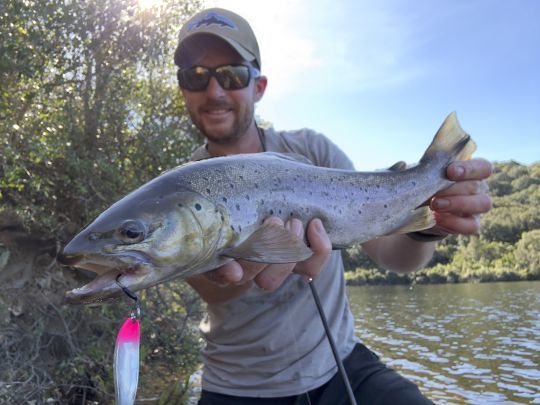
Wobbling spoon fishing tackle
As is often the case when fishing for trout, it is above all the environment that determines the length of rod to be used, from short lengths of between 1.30 m and 1.60 m for small streams, to 2.40 m for large environments such as rivers or lakes. What's particularly important when fishing with a wobbling spoon is to have a very resonant rod, with which you can feel the slightest touch.
As for the reel, a fairly low ratio allows you to fish very softly, which is often the key to this type of technique. The reel will be fitted with fine braid, again for a better feel for the bottom and the bites, but also to optimize casting distance. After this braid comes a fluorocarbon leader, the diameter of which will be adapted to the size of the trout targeted, but also to the more or less abrasive environment.
In fact, especially in reservoirs, the rocks can be too sharp and it's best to fish with a fairly long, strong leader. The junction between the wobbling spoon and the leader must absolutely be made with a staple, firstly to prevent the line from cutting itself as you cast into the sometimes sharp ring of the spoon, secondly to give the spoon a better swimming amplitude, and thirdly to be able to change the lure quickly if necessary.
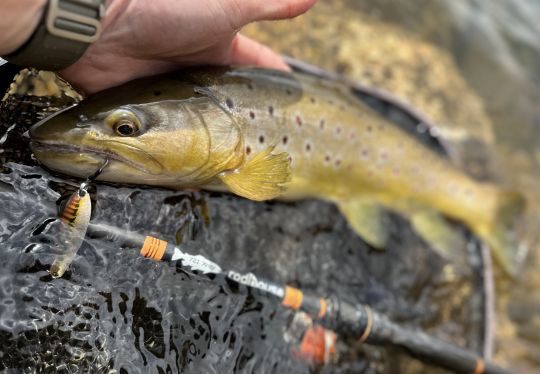
Weaponry for rippling spoons
Depending on the brand, wobbling spoons come with a variety of armament, from single hooks to trebles and assists, all with or without barbs. In certain rivers or regions, legislation may impose a particular type of hook on lures to better protect trout and make releases easier and more effective.
If there is no specific legislation in force, the fisherman has a choice of equipment, based on the following principles:
- For small ripples targeting modest-sized fish, especially in streams, a simple barbless hook is ideal, as it is less injurious to small fish.
- For medium-sized ripples, in rivers and lakes, assists seem to be the best compromise, as they generally bite at the corner of the lip, and the suppleness of the braid means very few fish can be hooked.
- Finally, when fishing with big ripples, you can use fairly strong trebles to get the best bite on the fish of your dreams.
River trout fishing with a rippling spoon
On rivers, trout fishing with wobbling spoons is generally done with models weighing between 3 and 10 g. This lure can be used in almost any position where trout are found, from currents to counter-currents to the deepest pools. To remain discreet, the lure moves as much as possible downstream to upstream, and casts are generally made from ¾ upstream with a retrieve slightly faster than the current speed. As the inclination of the rod plays an important role in the depth at which the spoon evolves, you must constantly lower or raise your rod to avoid snagging and ensure that the spoon fishes optimally in the desired layer of water.
When the water is very clear and the current weak, it's best to remain discreet and subtle by using small models of undulating spoons, which should then be brought back very slowly over the bottom in a linear movement that can be interspersed with small strokes of the scions to imitate a wounded fish and trigger attacks.
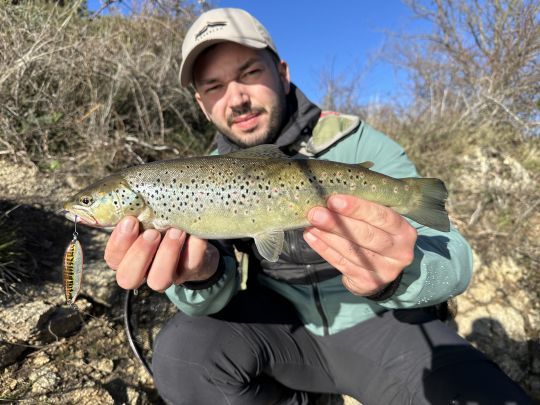
The undulating lure for lake trout, an indispensable lure
For lake fishing, whether natural or dammed, the undulating spoon remains an essential lure to have in your tackle box. It has many advantages, the main one being its ability to prospect. With a suitably powerful rod, a wobbling spoon can be cast a long way and can be used at all depths. The angler must remain vigilant during the descent phase, as it is not uncommon for trout to seize the metal lure as it flutters around trying to reach the bottom, so a quick strike is required before the fish releases its prey.
If, on the other hand, no touch is felt, once contact with the bottom has been made, a slow retrieve over the bottom can be initiated and remains one of the simplest and most effective animations! The touch of trout with a rippling spoon is sometimes dry and violent when the fish are very active, but it can also be very subtle, with a first, almost imperceptible nose strike, after which you have to keep grinding. Then, a few turns of the crank later, there's a more pronounced bite, which this time deserves an energetic and ample strike.
When retrieving, it's possible from time to time to give a few twitches to break up the linear swimming action of the undulating lure, sometimes triggering attacks from following fish.

 /
/ 